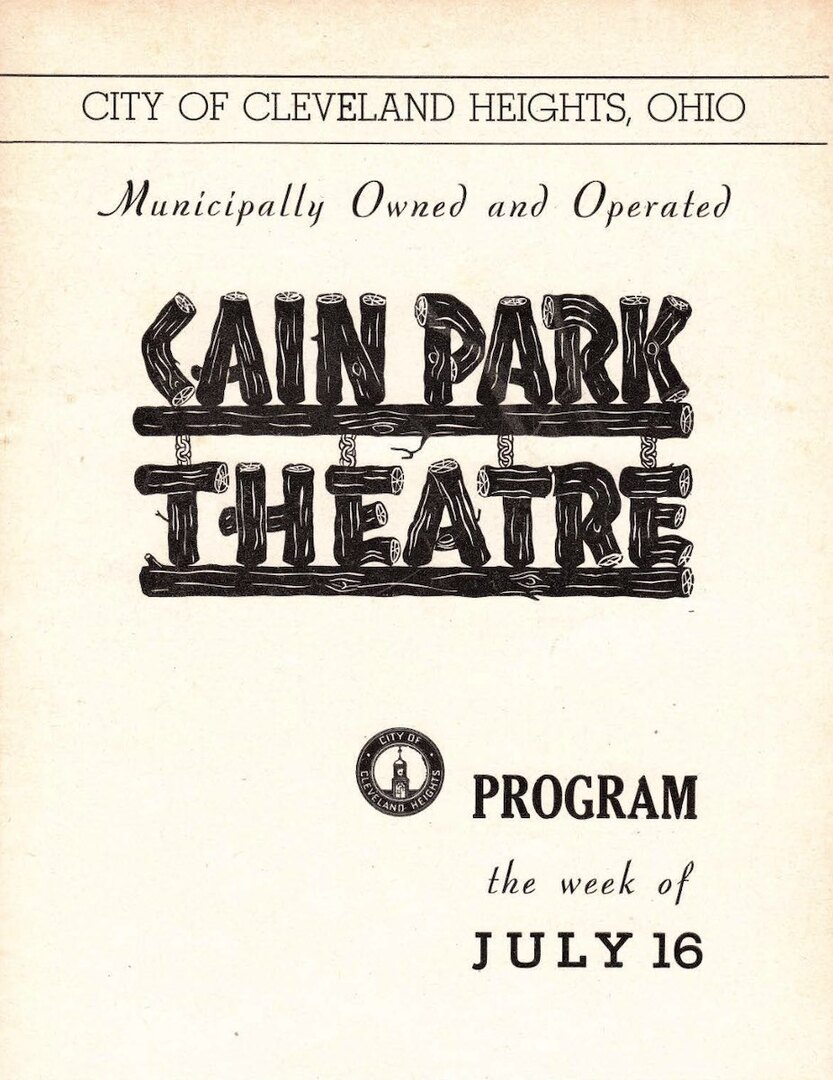
Before it became Cain Park, the ravine between Taylor and Lee roads was merely a wet, overgrown gully visited by only the most adventurous of hikers. In 1914, the Central Improvement Association of Cleveland Heights (then still a village) formed a committee to look into the possibility of turning the Dugway Brook ravine into a more formal public park. It was not until the 1930s, however, that Cain Park began to take shape.
Much of the credit for the development of Cain Park in the 1930s can be given to Dr. Dina Rees Evans, who taught drama and English at Cleveland Heights High School. In 1932 "Doc" Evans became the first person in the United States to receive a Ph.D. in theater. She was an adamant believer in the ability of drama education to have a positive effect on students. In the summer of 1934, the drama club she ran at Heights High, called the Heights Players, collaborated with the Civic Theater of Allied Arts (the city's adult stage group) to put on a production of Shakespeare's "A Midsummer Night's Dream." The show took place on a hastily assembled wooden stage at the foot of the sledding hill, along which spectators gathered. The production proved to be wildly successful and spurred the further development of Cain Park.
Frank Cain, for whom the park is named, served as Mayor of Cleveland Heights from 1914 to 1946. After witnessing the success of the 1934 production, Cain threw his support fully behind the construction of a 3,000-seat amphitheater in the park. Besides constructing the amphitheater, workers from the Great Depression-era Works Progress Administration (WPA) also helped drain the ravine which Cain Park is situated in, covering up and culverting the creek that ran through its center. Attractive landscaping, tennis courts, ball fields, and walking paths completed the transformation of the former "wild" land into a public park.
The amphitheater had its grand opening in August 1938 with the staging of "A Midsummer Night's Dream." Plays, operas, concerts, and other cultural events have been held at Cain Park ever since. Evans, meanwhile, continued to serve as managing director of Cain Park Theater until 1950. She attracted top-flight young talent to the theater company, including music director Jack Lee, producer Ross Hunter, and actors Hal Holbrook, Dom DeLuise, Carol Kane, Jack Weston and Pernell Roberts. Evans retired from teaching in 1958. The amphitheater was renamed in her honor in 1989.
Video
Audio
Images








